Hello friends, I hope all of you are having fun in your life. In today’s tutorial, we are gonna have a look at What is Electric Generator. There are numerous machines like motor, and transformers, are operating in our power system. The motor is an electrical machine that converts electrical energy into mechanical power. The transformer is used to step up and step down voltage level in system. A motor is a machine used to transform electrical energy into mechanical energy. There are 2 main types of motors first one is ac motor and the second one is the dc motor. The sub types of dc motors are dc series motor, dc wound motor, dc shunt motor, compound motor. Like dc motor, there are numerous types of ac motors like an induction motor, synchronous motor single phase induction motor, and three phase induction motor.
Like these motors, there is a most important machine used in an electrical system that is a generator. Alike to motor there are numerous types of a generator such as induction generator, synchronous generator, dc generator, etc. ac generator like synchronous generator is used in generation station. In today’s post we will have a detailed look at working, construction, applications, types and some other related parameters of the generator. So let’s get started with what is Generator.
What is Electric Generator
- A generator is an electrical machine that transforms mechanical energy provided by the prime mover into electrical energy. The prime mover can be steam, water, gas turbine, wind turbine, etc.
- A first electrical generator was invented by Faraday in 1831, who was a scientist of the United Kingdom. Faraday’s generator name was Faraday Disk. This generator was to deliver power to the grid station.
- With the invention of generator faraday also gave its operating principle in 1831 its rule is also known as Faraday’s law.
- Faraday’s law states that if some conductive material is placed in a magnetic field then emf will be induced in that conductive material.
Emf=dø/dt
- The construction of the Faraday disk generator was very simple for it he used simple copper disk and rotates in a field of horseshoe shape magnet. The output of the faraday generator was dc voltage.
- Both motor and generators have almost similar construction some can also drive as generators.
- Either generator is dc or ac is playing very important rules from our generation system to industries and our homes providing power to our appliances and machines.
Working Principle of Generator
- The operation of an electrical generator depends on the faraday law of electromagnetic induction.
- That says if conductor is put into the field then the voltage induces in that conductor. In the case of the generator, the conductor is rotor of a generator and the field is provided by the stator of generator.
- We can use Fleming rule to find the direction of the voltage induced that conductor. That explains that if we arrange our right-hand first finger, second finger, and thumb in a such a way that these are at 900 to each other, and we suppose that motion of conductor is along the thumb, first finger is in the direction of field then the second finger will show the direction of voltage induces in the conductor.
- The working principle both ac and dc generators is similar but the difference is that at in dc generator commutators are used to provides a dc output.
Construction of Generator
- There are numerous parts of the generator are used in construction of a generator but the most important parts are rotor and stator. Let’s discuss all these parts with the detailed.
Yoke
- The outer structure of a generator is known as a yoke, it provides safety to the generator from the external environment. It is constructed with steel or cast iron.
- With providing strength to internal structure it also holds the stator windings that provide flux to a machine.
Windings
- There are two types of main windings are used in any generator either dc or ac first one is armature winding that is wound on the rotor of the motor and the second one is stator winding that wound on the stator of the generator.
Rotor
- The rotor is of a generator that is rotating part over which armature windings are wound. In some dc generator instead of windings on rotor permanent magnet rotor is used.
- In ac machines there are two main types of the rotor is used first one is the wound rotor and the second one is squirrel rotor.
Equivalent circuit of Generator
- In the given figure, you can see the equivalent circuitry of the generator linked with the load. In the given figure you can see some parameters that are described here.
- VG is the open circuit voltages of a generator.
- RG is the interior resistance of the circuit.
- VL value of voltage when load connected.
- RL is the value of resistance offered by the load.
DC Generator
- Dc generator is a type of electrical generator that produces a dc voltage at its output terminals. Its construction is similar to the dc motor and we can use the dc motor as a generator also.
- There are some sub types of dc generator like shunt generator, series generator, compound generator, etc.
- For an understanding of the working of this generator, we take an example of a loop rotating in a magnetic field and compare with the practical generator.
- If we rotate a loop in a magnetic field of a permanent magnet then the voltage will induce in the loop.
- This is also according to the faraday law that says that if we rotate any conductor in a field than voltage will induce in that conductor due to flux variation in the conductor.
- If we compare a loop rotation in a field with the practical dc generator then we will come to know that the rotating part is the rotor of generator and field is providing at by the magnet at the stator or windings of the stator.
Advantages of DC generator
- These are some advantages of a dc generator.
- Its construction is very easy and can be repaired without any difficulty.
- Its working principle is very simple.
- This machine provides higher reliability.
- Its speed can be controlled very easily.
- Its output voltages value is constant.
AC Generator
- Ac generator is a type of electric machine that transforms mechanical energy into ac electric energy. Nowadays mostly ac generator is used in our commercial and industrial applications.
- There are 2 main types of ac generator first one is a synchronous generator and the second one is an induction generator that is also known asynchronous generator.
- In local and some commercial uses induction generator is used while in a generation and in a wind turbine synchronous generator is used.
- With the type of rotor design, the ac generator is further divided into types first one is the wound rotor and the second one is the squirrel rotor generator.
Induction Generator
- An induction generator is a type of ac generator it also known as an asynchronous generator. It works on the principle of electromagnetic induction.
- Its construction is similar to the induction motor so induction motor can also be used as an induction generator with some modifications.
- It mostly used in wind turbines, mini hydel generation plants, etc.
Synchronous Generator
- The synchronous generator is a type of ac generator that operates on the synchronous speed. Synchronous speed is the rotation speed of the field at the stator provided by the input supply.
- It also called alternator and used to transform mechanical energy into electricity.
- In our generation stations mostly synchronous generator is used.
- They are available in ratings of fifteen hundred megawatts.
Difference between AC and DC Generator
- These are some differences between the ac and dc generator that is explained with the detailed.
| AC Generator | DC Generator |
| The main difference is that the ac generator converts mechanical power provided by the prime mover into the ac power. | Dc generator converts mechanical input into the dc output. |
| Its output voltage varies its polarity after a certain interval of time. | Its output voltage flows with a similar polarity means are dc. |
| There is no need of commutators in the construction of this generator. | In this generator, commutators are used. |
| In an ac generator, slip rings are used. | In this generator spilt rings are used for conversion of ac into dc at the output terminals. |
| In ac, generator armature is always existing at the rotor. | In dc generator the armature part can be either rotor or stator. |
| Its effienc is larger due to less power losses. | Its efficiency is less due to large power losses. |
| Its output current can be induced at the stator or the rotor. | Output current produces at the rotor. |
| Its output voltage are high and varies in amplitude normally frequency of output voltage is fifty or sixty harts’ | Its output voltage are in less value and frequency is zero. |
| Its repairing is very simple and its reliability is also good. | Its reliably is less due continuous repairing. |
| Its types are induction, synchronous, single phase, three-phase, wound rotor, etc. | There are only two type of dc generator. First one is self-excited and separately excited. |
| It is expensive than the dc generator. | Its price is less |
Difference between Motor and Generator
- These are some differences between motor and generator.
| Motor | Generator |
| Motor transform electrical energy into mechanical energy. | Generator converts mechanical energy into electrical energy. |
| It uses electrical energy. | It produces current. |
| The rotor of the motor rotates with the interaction among the field of stator and rotor. | Its rotor is rotated with the prime mover. |
| In the motor, the input is provided at the armature windings. | In the motor, the output is taken out from the armature. |
| Motor operating principle is according to Fleming’s left-hand rule. | The generator working principle follows Fleming’s right-hand rule. |
Applications of Generator
- These are some common applications of generators that are describe here with the detailed.
Power station
- The power station is also called powerhouse it is a place where electrical energy is produced. At these powerhouses, more than one generator are installed for the production of 3 phase electrical power.
- Due to relative movement among the field of stator and rotor of generator voltage are produces.
- The prime mover is used to rotates the rotor of the generator, mostly used prime mover are coal, fuel, gas, hydel, etc.
Roadway vehicles
- In vehicles, a generator is used to provide power to their different components and recharging of batteries.
- Till 1960s dc generators were used but with the invention of rectifies ac generators are also used in different vehicles.
Bicycles
- In bicycles generator used to provide power to their lights and charging of batteries. Mostly there is 2 main kind of generators are used for bicycles first one is bottle dynamos that control the tire of the bicycle.
- The other type of generator is hub dynamos that are directly linked to the bicycle’s drive train.
Sailboats
- In sailboats generator used is gets mechanical power from the water or air. It used in boats to provide energy to their batteries and some lighting instruments.
Electrical scooter
- Generators are also used in a scooter to provide power for their operation.
Mechanical calculations
- The tacho generator is a device that generates voltage equal to the rotation speed of its rotor.
- This generator is used as a speed indicator and for a feedback speed control system.
- In industries speed of motors, engines are measured with the tachometer that gets power from the tachogenerator.
So, friends, it is the detailed post on the generator I have written each and every parameter related to a generator in this post. If you have any queries about this electrical machine ask in comments. Thanks for reading. See you in the next tutorial.

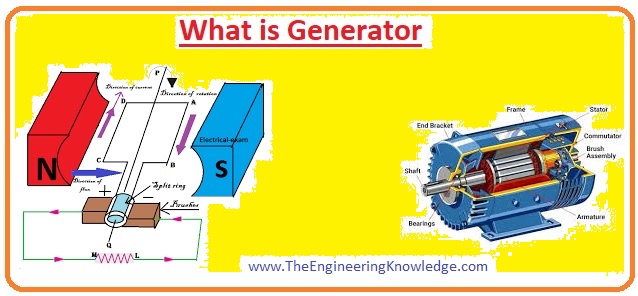
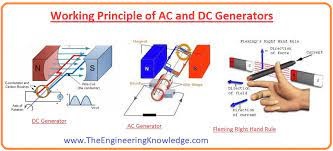
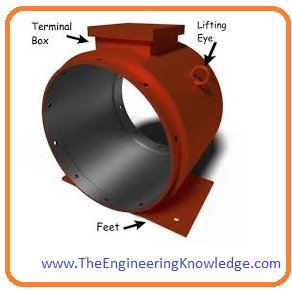
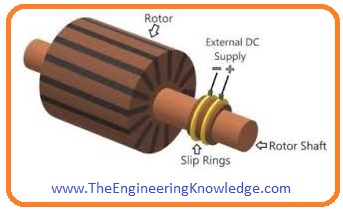
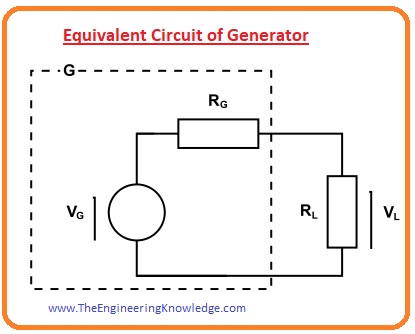
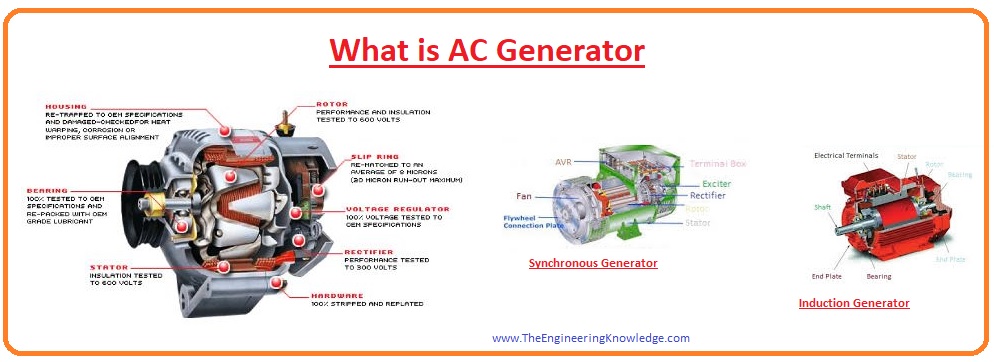
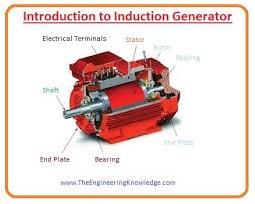
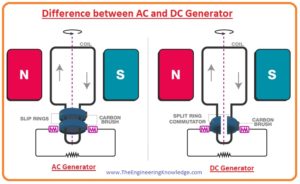






I had no idea that in AC machines there are two rotors used. I have always wondered how AC machines work. Once you explained how rotors work, it makes sense for why they have two.
Hi! This is my first visit to your blog! We are a collection of volunteers and starting a new initiative in a community in the same niche. Your blog provided us beneficial information to work on. You have done a outstanding job!
I found your blog website on google and test a number of of your early posts. Continue to keep up the excellent operate. I simply extra up your RSS feed to my MSN Information Reader. In search of ahead to studying extra from you in a while!…
Superb blog you have here but I was wondering if you knew of any community forums that cover the same topics discussed in this article? I’d really love to be a part of group where I can get suggestions from other knowledgeable individuals that share the same interest. If you have any recommendations, please let me know. Appreciate it!